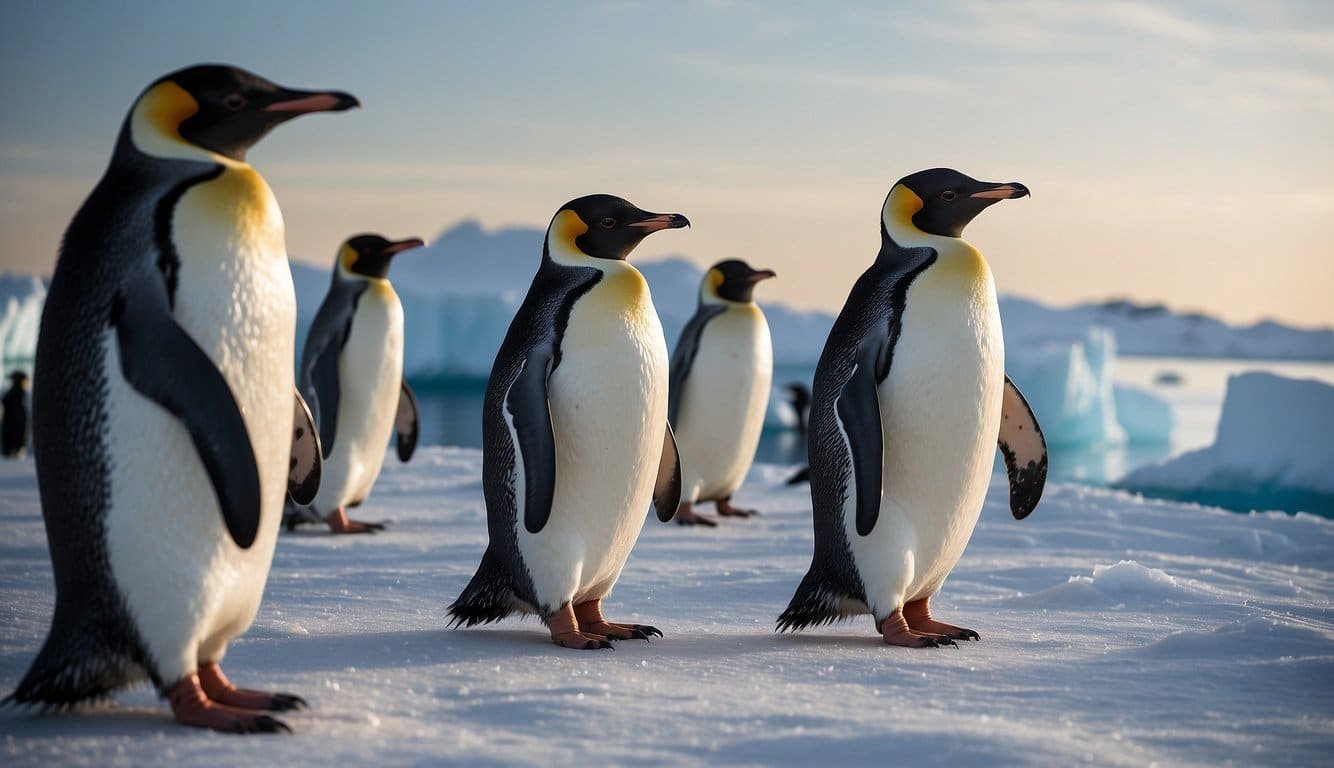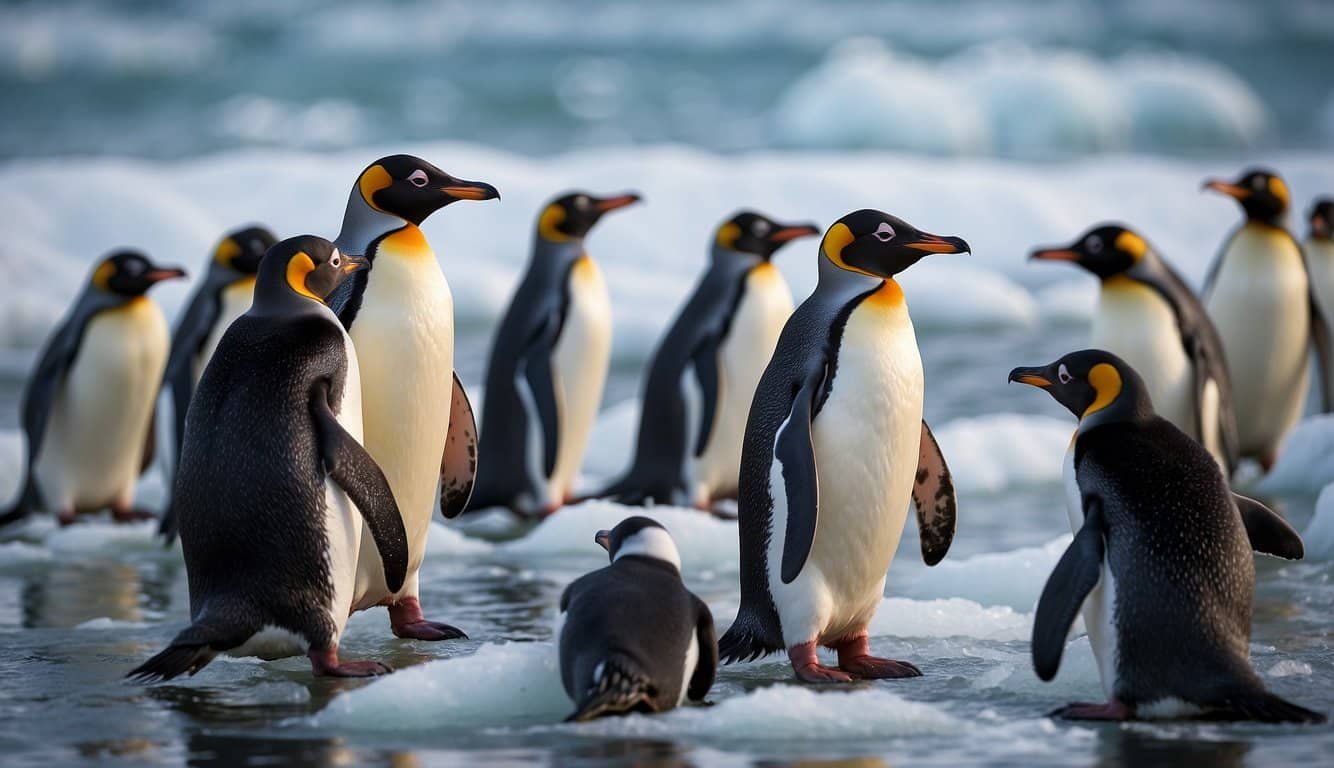The World of Antarctic Penguins

Antarctic penguins thrive in some of the most challenging conditions on Earth. Here, diverse species exhibit remarkable adaptations, carrying out their breeding cycles in the heart of the icy continent.
Diverse Penguin Species
Antarctica is home to several penguin species, each with its distinct characteristics. The Emperor Penguin is the tallest and heaviest, standing nearly 4 feet tall. Meanwhile, the jaunty Adélie Penguin is recognizable by its classic tuxedo-like appearance. Other residents include the Gentoo Penguin, with its distinctive red bill and white stripe across the top of its head, the Chinstrap Penguin, named for the narrow black band under its head, and the crested Macaroni Penguin, sporting a vibrant yellow-orange plume.
Unique Adaptations to Extreme Cold
These penguin species have evolved to survive the frigid Antarctic environment. Their thick feathers and a layer of blubber provide insulation. Furthermore, behaviors such as huddling together help them conserve heat during the brutal winters. The Emperor Penguins take this to the next level, enduring winter temperatures as low as -60°C (-76°F) while fasting and breeding.
Breeding and Reproductive Habits
Breeding is a critical aspect of the Antarctic penguins’ life cycle, often involving lengthy and arduous processes. For instance, the Emperor Penguin breeds in the heart of winter, which necessitates a remarkable trek to their breeding sites. Conversely, the Adélie Penguin mates and nests in large colonies on the ice-free areas during the summer months. Interestingly, both Emperor and Adélie penguins lay only a single egg, whereas Gentoos might lay two, emphasizing the precious nature of new life in Antarctica.
Habitat and Diet of Antarctic Penguins
Penguins in Antarctica have adapted to thrive in one of the harshest environments on earth, where their diet and habitat reflect a complex interplay of the ecosystem dynamics.
Foraging Strategies and Predation
Antarctic penguins are adept swimmers, utilizing efficient hunting techniques to consume a variety of prey including krill, fish, and squid. Their diet primarily consists of Antarctic krill, which serves as a cornerstone of the Antarctic food web. They dive to various depths in search of food, often coordinating their efforts to outwit predators like leopard seals, killer whales, and even sharks. Predation threats are significant, but penguins counter them through agility and cooperative behaviors during their feeding forays.
Penguin Colonies in the Antarctic Ecosystem
Colossal penguin colonies are scattered throughout the Antarctic, forming bustling hubs of activity within the icy habitat. These colonies are not just simple gatherings; they’re structured communities where penguins breed, molt, and rear their young, often returning to the same spot year after year. The intricate network of these colonies sustains itself through the abundance of available seafood such as fish and squid, found in the surrounding waters. Emperor and Adélie penguins are particularly known for their expansive colonies on the ice. These communities also play a vital role in the Antarctic ecosystem as bioindicators, reflecting the health and changes in their environment.
Conservation and Threats

Penguins in Antarctica face a cocktail of challenges, from climate change to human activities, threatening their majestic waddle through existence. Focused efforts are gaining traction to sway the tide in their favor.
Risks and Preservation Efforts
Antarctic penguins are contending with a spectrum of risks. A significant threat is climate change, which affects their habitat by reducing sea ice and altering prey availability. Human impact contributes to this as well, with pollution and fishing practices reducing food sources. Efforts under the International Union for Conservation of Nature (IUCN) have led to increased awareness and action plans for penguin conservation.
At the heart of preservation efforts lies the establishment of protected areas and breeding colonies, ensuring a stronghold for penguin populations. Wildlife conservation organizations are also working to mitigate human impact through stringent regulations on fishing to secure the penguins’ food supply and strategic ecosystem management.
Climate Impact and Human Interactions
Climate change swings a double-edged sword; while warmer temperatures can temporarily expand some feeding grounds, the overall trend threatens the stability of penguin habitats by melting the cold environment they need to thrive. Ironically, Antarctic penguins depend on a delicate balance of cold for breeding and ice for access to waterways.
Interactions with humans have mostly been detrimental; however, increased tourism has spotlighted the need for direct conservation action. This attention has spurred policies to minimize human impact, such as adopting eco-friendly tourism practices. The increase in global temperatures continues to prompt the need for immediate and effective conservation strategies, emphasizing the importance of international cooperation to safeguard these iconic creatures of the Antarctic.

